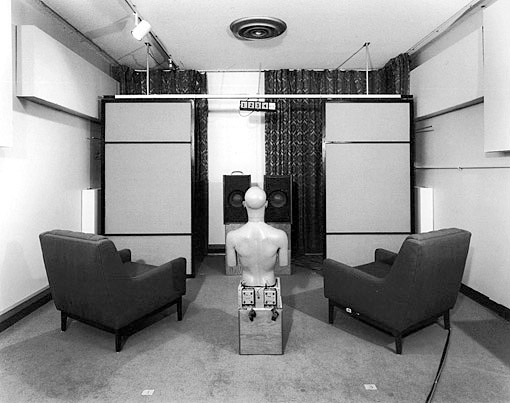
(Photo: Karin Apollonia Müller)
Here are another couple of photobooks from last year that I think are worth a look at.
The first one is On Edge by Karin Apollonia Müller. I wrote quite a bit about it earlier this year. Needless to say it is still at the top of my list of photobooks from 2009. If Müller's first book is anything to go by, it may also be hard to get hold of (and rather expensive) when the first edition goes out of print (thankfully now reprinted), so if it appeals to you, you might want to grab a copy while you can...

-0-0-0-0-0-0-0-0-0-0-0-0-0-0-0-0-
The other book is Cover by Canadian photographer Lynne Cohen. I've talked about Cohen before a few times and she is still a photographer whose work I look to for nurturing my own thoughts and ideas.
Cover is a very good overview of much of her work and definitely worth trying to get hold of. There is also a very good online interview Cohen by George Slade:
"I have to admit I've never been much taken by technology. While it is true that many of my pictures touch on the technological world — military installations and scientific laboratories for example—I'm more interested in how aspects of this world look more like a children's toys or old fashioned game boards. For some people this might be comforting, for others the camouflage might make it seem still more disturbing. But there is another way of interpreting your question. In the late 1980's in a short review of a show I did in NYC, a critic seemed to think I had constructed the interiors that I photograph in my studio, at least introduced objects I brought with me into them. Admittedly, this was a post-modern moment when artists were constructing models in their studios to photograph. But what I photograph is a chunk of the world as I find it (with a few assists). It strikes me that if what I photograph were not more or less true, it would lose an important edge. I am not the first to find reality stranger than fiction. But I have to say that I quite like the idea that there is a question about the truth of what I photograph, that there is the sense that what I am photographing could not be true, that it must be constructed. An interesting example is a picture of an acoustic laboratory that I made the same year as Thomas Demand constructed one. If you look at our pictures next to each other, I am pretty sure you'll think the laboratory in Demand's picture looks more real than the laboratory in mine even though his is entirely hand-made in his studio and mine a photograph of a real acoustic laboratory that I came upon in England. Trying to figure out why his photograph looks more real than mine, it struck me that he makes all sorts of small corrections when building his models. He must step back to look at them, make changes, have another look, make more changes and so on, before taking a picture. In my case I set up a view camera in front of the actual site and make a photograph because I am intrigued by the many ways things in the world look off. In the case of the laboratory, I remember thinking that everything is the wrong size, the light is strange—hot and cold—that the androgynous dummy looks larger than life and has a bizarre red stopper stuck in its mouth and that the acoustic panels look hairy. Demand seems interested in getting everything to look right and making it believable while I'm interested in the many ways the world looks so wrong and unbelievable..." More here(Photo: Lynne Cohen)








No comments:
Post a Comment